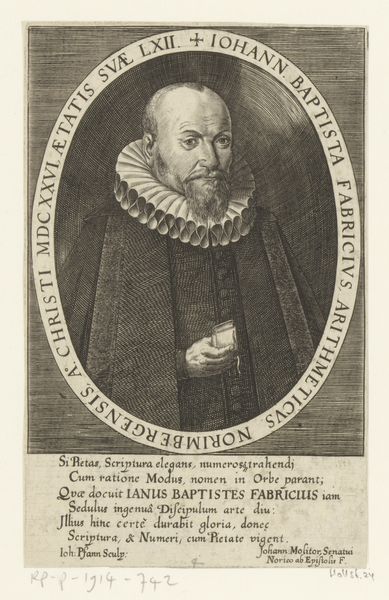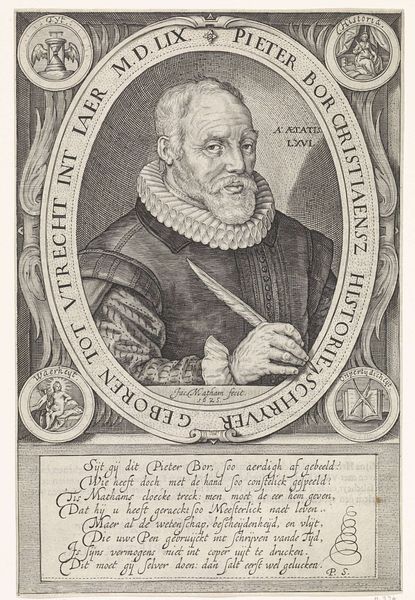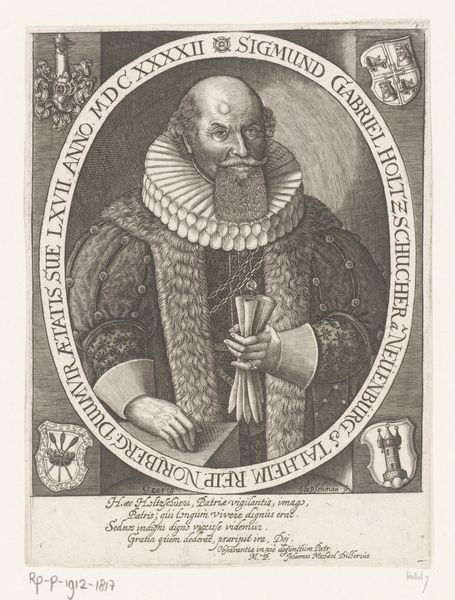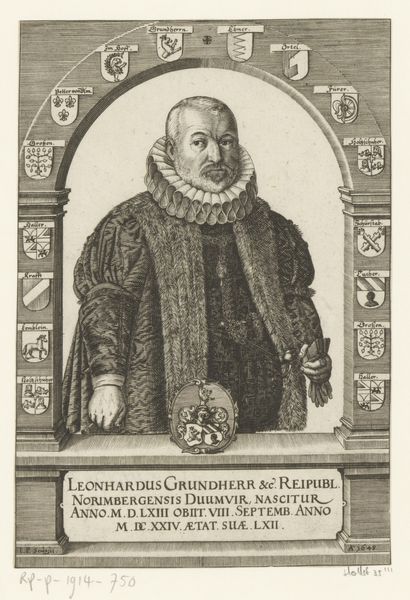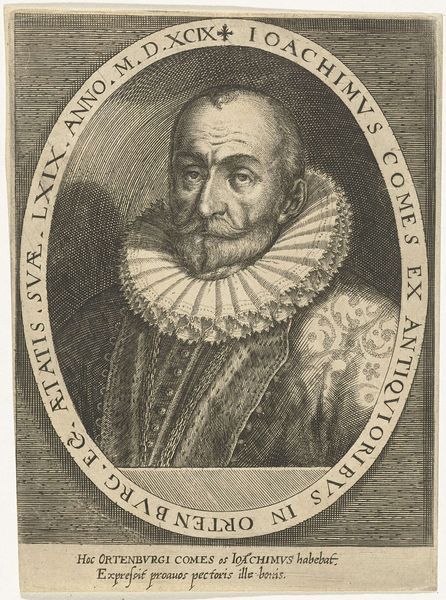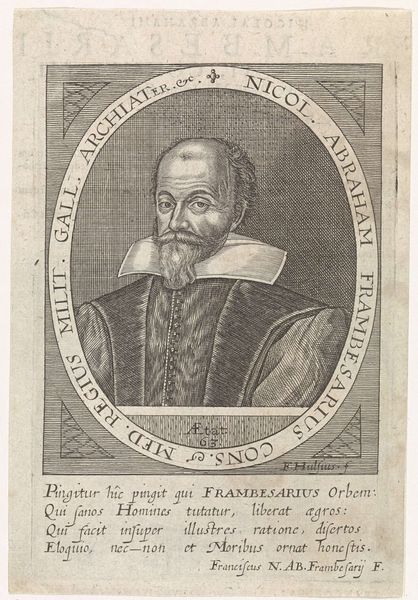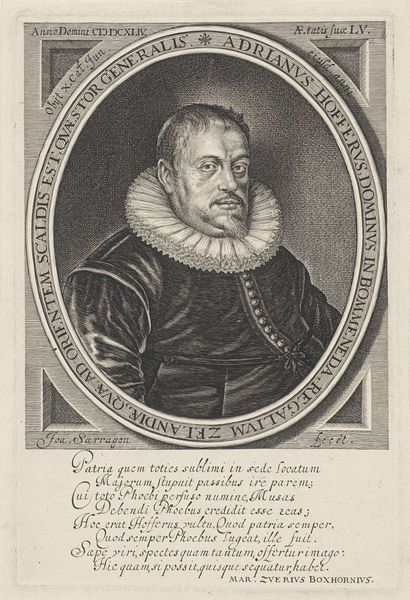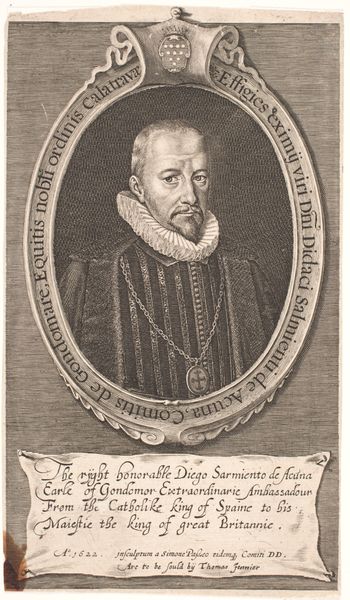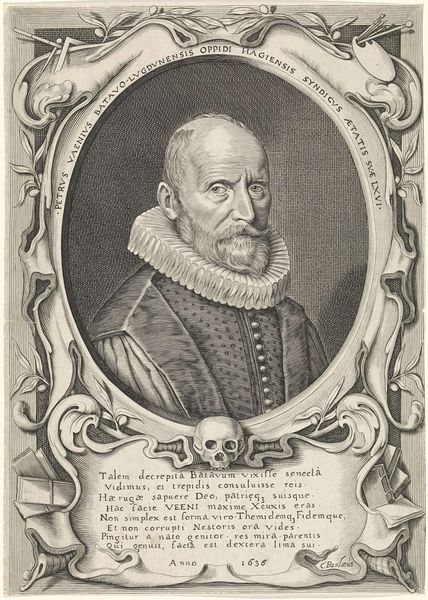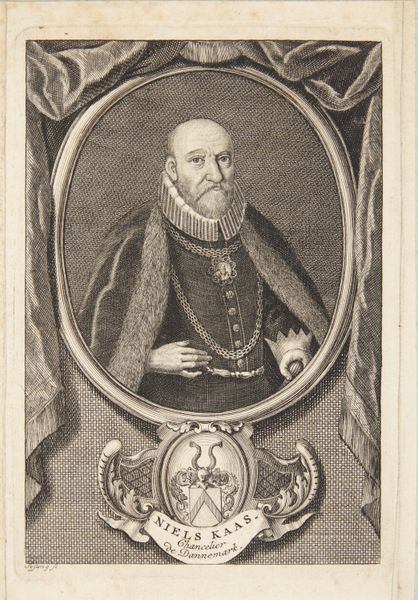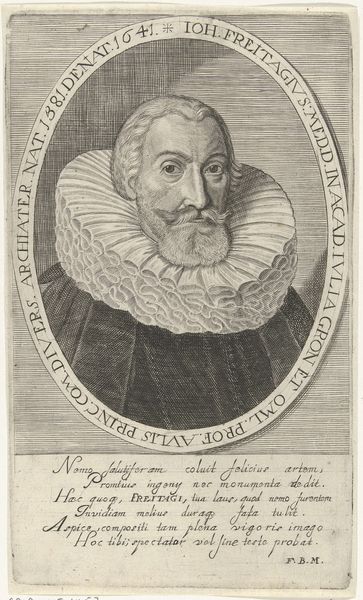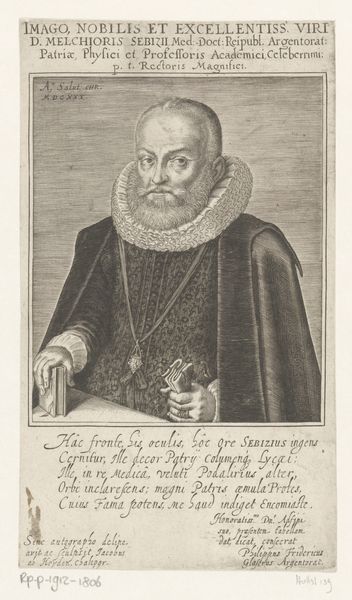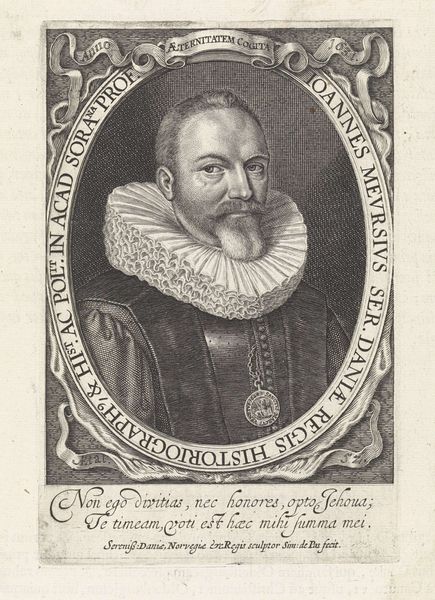
engraving
#
portrait
#
baroque
#
old engraving style
#
historical photography
#
history-painting
#
engraving
Dimensions: height 170 mm, width 115 mm
Copyright: Rijks Museum: Open Domain
Curator: Up next, we have an engraving from between 1648 and 1663, titled "Portret van Georg Abraham Pömer," created by Johann Pfann. Editor: It's a striking portrait. The texture of the ruff and the fur coat create an incredible visual richness, all within a very restricted palette. The balance of the circular and rectangular frames is masterful. Curator: Indeed. Engravings like this served multiple purposes. They acted as portraits, of course, but also as social documents, cementing the status and identity of individuals like Georg Abraham Pömer within their communities. The labor involved in creating such a detailed print speaks to the value placed on representation and dissemination of images in the period. Editor: Notice how Pfann uses varied line weights and densities to suggest form and depth. Look closely at Pömer's face. There's an almost photographic quality to the realism achieved through pure line work. Semiotically, the fur coat, the ruff, even the ornate frame speaks to Pömer's status and authority. Curator: Absolutely, and thinking about materials and process, consider the socio-economic aspects of printmaking. The production and distribution of these engravings involved a network of skilled artisans, merchants, and consumers. Printmaking played a significant role in shaping visual culture and public opinion at the time. It would be interesting to see what paper it was printed on and if any surviving paper mill markings could tell us more about where the physical materials to create this were sourced. Editor: That's an intriguing consideration. For me, it always comes back to how skillfully the artist worked with the constraints of the medium. The way Pfann manipulated line and form transforms a relatively common printing method into an unforgettable image. Curator: Understanding the means of production helps us understand who had access to these images, how they were consumed, and what kind of messages they conveyed. Editor: A compelling argument to ensure all formal investigations have a grounding in labor, material and historic understandings. Curator: Indeed, I found those points illuminating as well. Thank you for sharing.
Comments
No comments
Be the first to comment and join the conversation on the ultimate creative platform.
